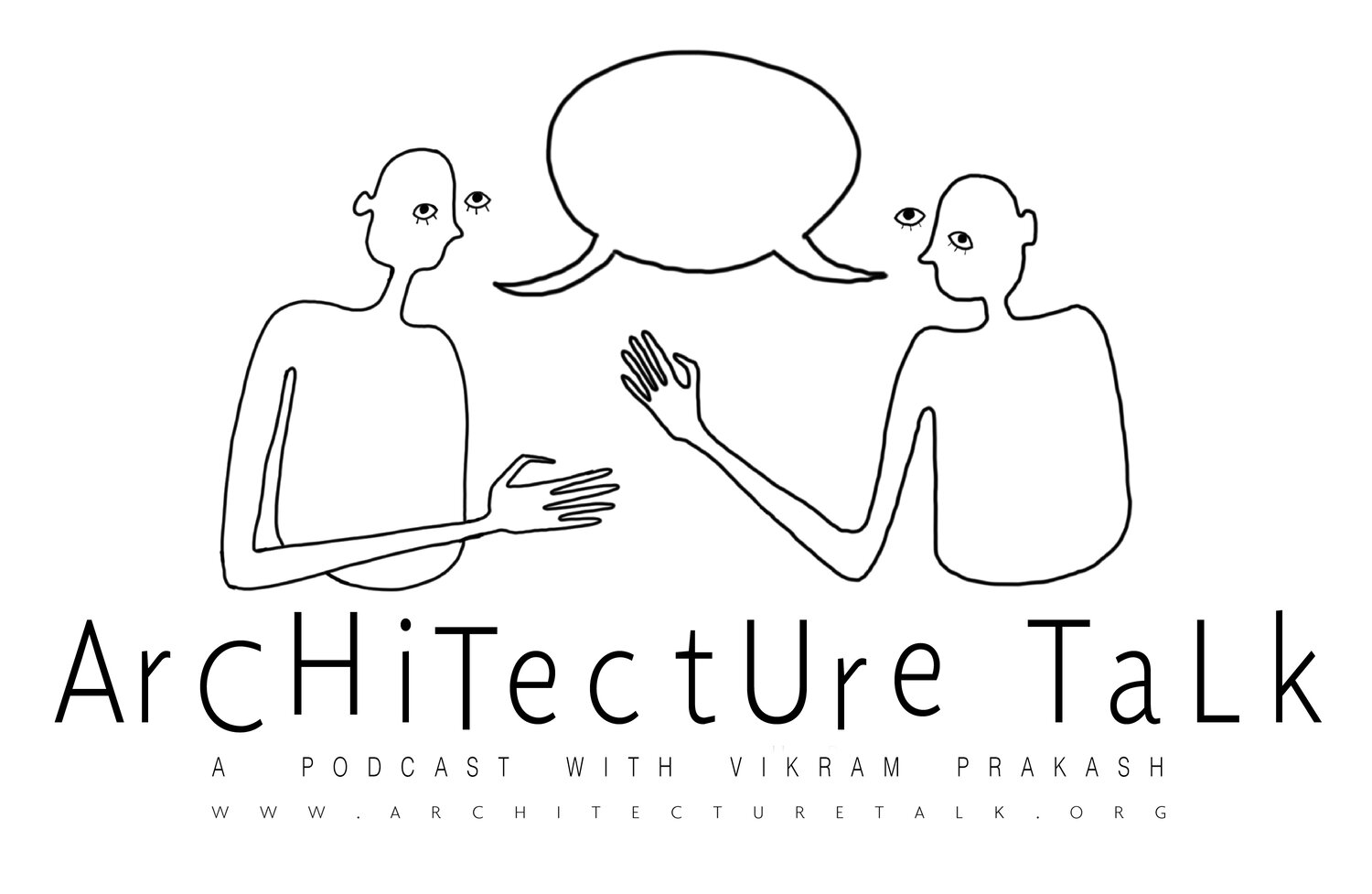79. AITC: Narrative, Fiction, OOO, and the Making of the Architectural Meme as criticism with Benedikt Hartl and Ryan Scavnicky
Original Drawing by Tori Haynes
“It is not about turning fiction into fact…[architecture] does not have to become reality.”
- Benedikt Hartl
“The world needs more architecture, but less buildings.”
-Ryan Scavnicky
This week we continue our ongoing miniseries Architecture in the Time of Coronavirus with two distinct, yet parallel discussions. The first conversation, with Benedikt Hartl of Opposite Office, probes the possibilities in future-driven narrative architecture to achieve sustainability and resiliency in the face of climate change, pandemics, and the unknown. The second, with Ryan Scavnicky of Extra Office, discusses the internet meme as a tool for critiquing and reframing the culture around architecture and looks to Object-Oriented Ontology as a philosophical framework for speculation in architecture.
Timestamp Outline
1:20 Introduction of Benedikt Hartl of Opposite Office
2:25 Proposal to convert Berlin’s new airport into COVID19 infrastructure and proposal to convert Buckingham Palace into affordable housing.
5:24 Why are architecture stories (narrative architectures) the same as architecture (simplistically understood as) buildings? Why are architectural stories important? Why are they imperative for the genre/discipline of architecture? VP
5:30 “Buildings define how we live and on the other hand how we live defines how we build. It is like a mirror to society…[narrative architecture] is a way of testing, if you want to change something in the built environment you have to change it in the ways of speculation...Speculation shows us what is absent in our world. [It is a form of socio-political critique] an unwillingness to accept the world as it is.” BH
8:00 Berlin airport project [The Berlin Airport project and the Buckinham Palace project serve as alternative visions of a lived reality. They imagine architectures that serve people in times of crisis and great need and, at the same time, serve as a critique of the forces of globalization and classism. In these projects, architecture as symbolic capital is rejected in favor of a more human-centered, need-based narrative.]
9:00 Climate Change Activism, such as Greta Thunberg
9:20 “Flying Shame” - “the movement that encourages people to stop taking flights to lower their carbon footprints” - from the New York Times
11:30 The Berlin Airport project confronts forces of globalization (like international trading and travel) and addresses issues surrounding the Corona virus.
12:45 “What is the “opposite” vision of globalization and colonization?” VP
13:50 Building is a global practice - where do our materials come from, labor, etc…?
14:20 Lux Machina project and Faust - a building is placed in the story of Faust
17:15 Light as the traditional metaphor of knowledge; water and looking at reflection as traditional metaphor of narcissism - the Faustian battle between divine and human knowledge
18:20 How will architecture change in the face of coronavirus in terms of materiality, social systems, etc.?
19:40 “Six feet is a very specific architectural solution. This pandemic is a global health issue...so the connection between an architectural dimension and a complex vital ecology has never been clear.” VP
20:30 “What has the pandemic showed us? It showed us how vulnerable our systems are. Maybe the next crisis is already on the rise so I think we should create more resilient architecture - one that adapts to new crises.” BH
21:30 Resilient architecture
22:00 Vikram’s argument for a more trans-disciplinary approach to architecture
25:00 “Who are telling the stories now? We need to convince them that they’re all architects.” VP
27:00 Benedikt’s argument for human-centered design over capital and private property
28:00 Discussion of the post-capitalocene, post-anthropocene
29:45 “One of the really sad effects of modernization, industrialization and colonization was that material wealth became the primary measure of wellness.” VP
34:00 What is a city for laughing?
34:30 Introduction of Ryan Scavnicky of Extra Office
35:45 Ryan’s work involves “Troubling the traditional historical canon of architecture through new channels of critical practice.” RS
36:25 “What does it mean for a meme to hold aesthetic implications and critical content?” RS
36:40 What is a meme? 1) a unit of cultural transmission (i.e. any learned cultural behaviour, like saying “bless you” after a sneeze, or the Macarena); 2) an Internet meme is a way of showcasing judgement or social critique of a contemporary issue.
40:00 You can build a history of architecture using memes. Why is it so important to look at different histories?
41:15 “Memes have a ‘bottom-up’ quality to them...they can be considered to be very connected to disseminated contemporary culture, which is very cynical and critical and constructive at the same time…” VP
42:00 How can the meme reveal more about architecture?
43:00 Bjarke Ingels memes
48:00 Formalism in architecture
49:20 What is your definition of an expanded architectural practice? VP
50:00 “I think its time that architects move discourse outside of the institution...Architecture seems to be seeping outside of itself into other arenas especially through media and it’s not an accident...through other media there are opportunities to explore what architecture might manifest as...or architectural thinking, which is our ability to think and talk about new worlds and visualize and imagine them in different ways…” RS
52:00 How do we make architecture into a daily cultural practice? VP
52:18 The Carnivalesque
53:10 “The more important work is by taking a cynical or humorous look at architecture, you can change architecture culture and if you change architecture culture, you can change architecture.” RS
56:20 Object Oriented Ontologies, or OOO
56:54 Flat Ontology
57:30 de-privileging the human - post-anthropocene
59:00 “The coronavirus pandemic has revealed that our planet is not interested in anthropocentrism.” VP
60:00 Timothy Morton, Dark Ecology






